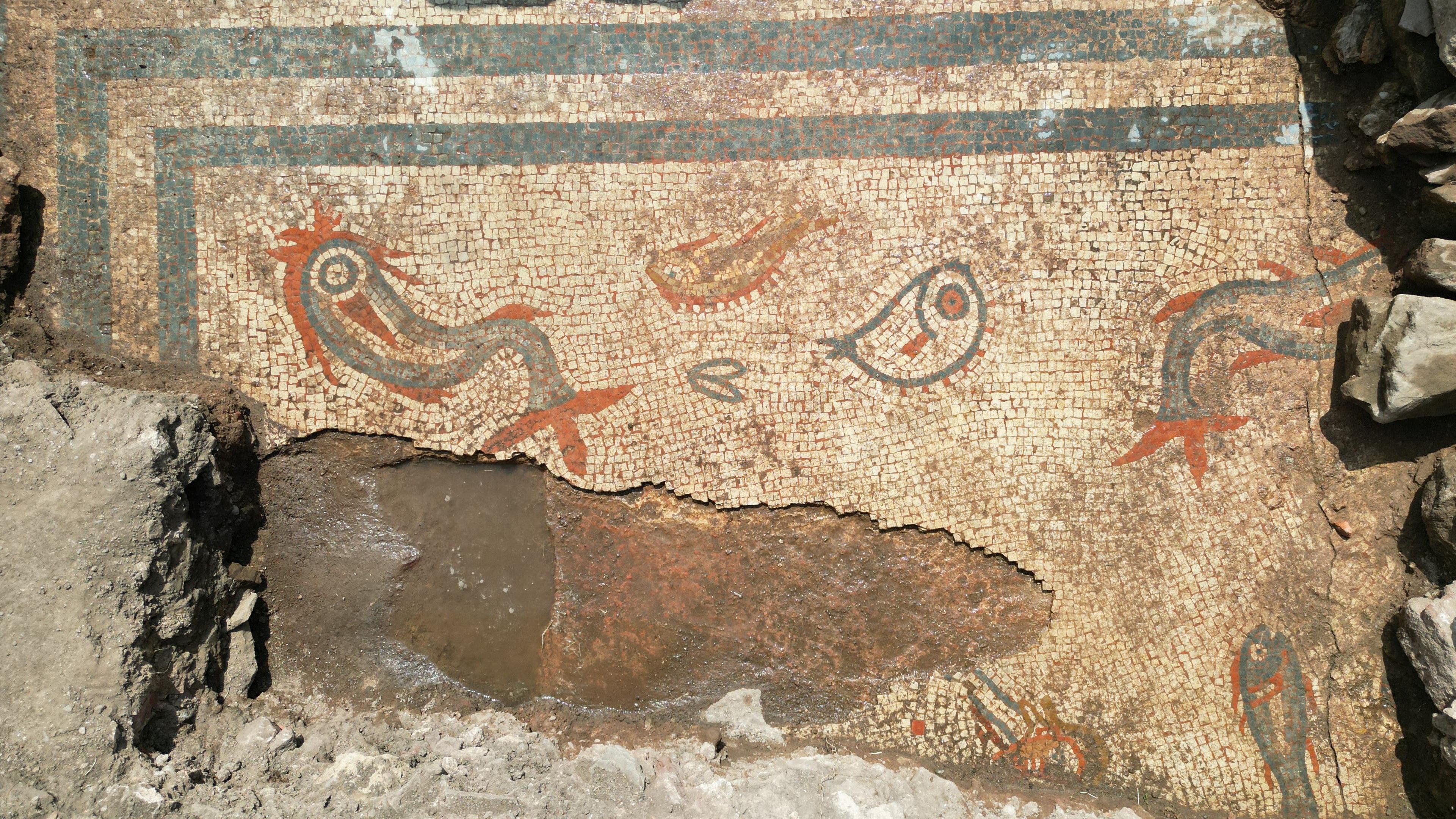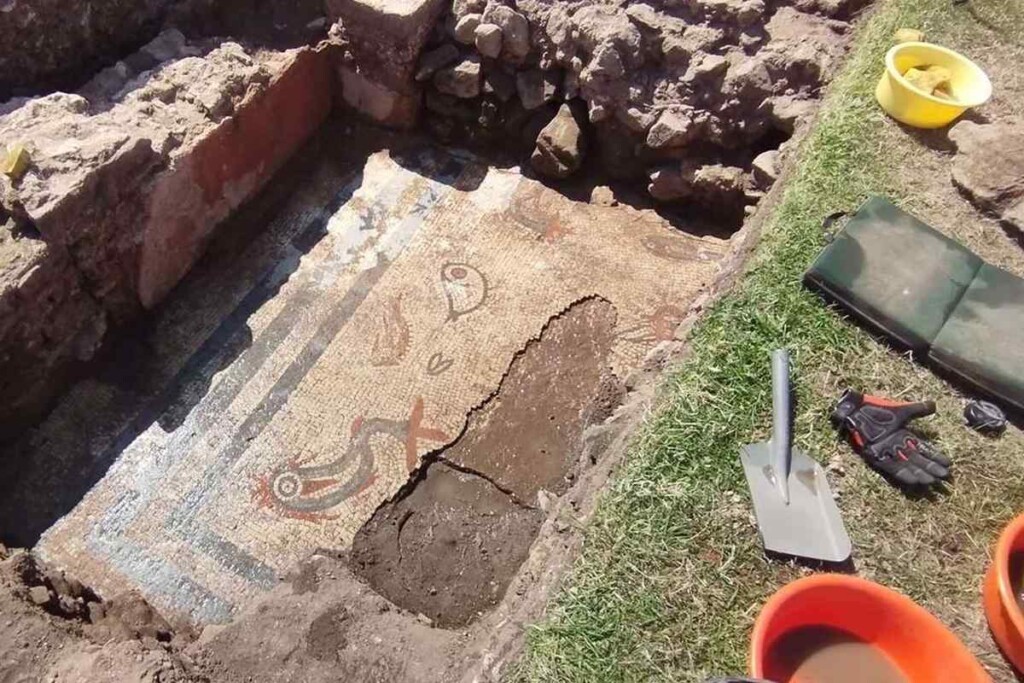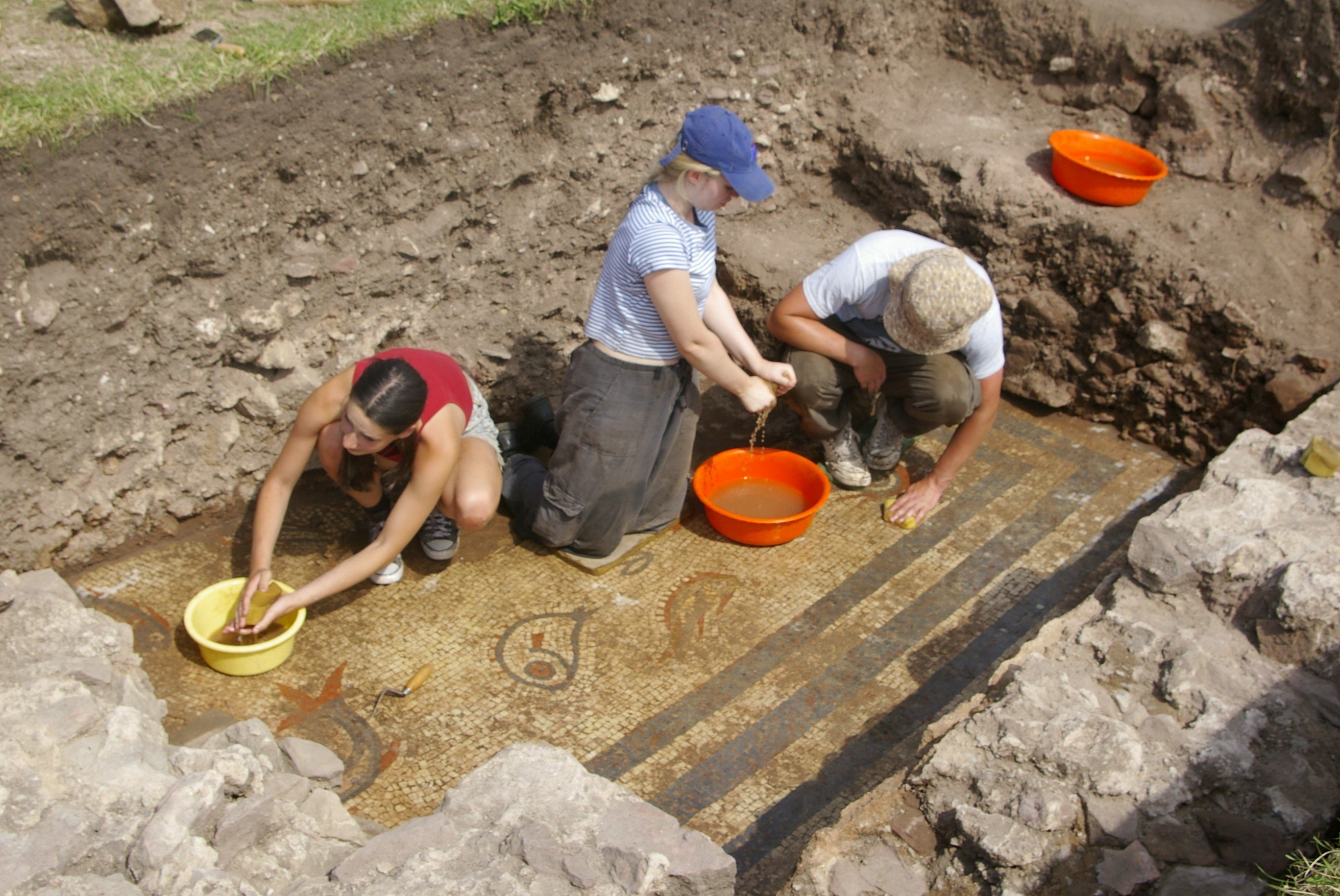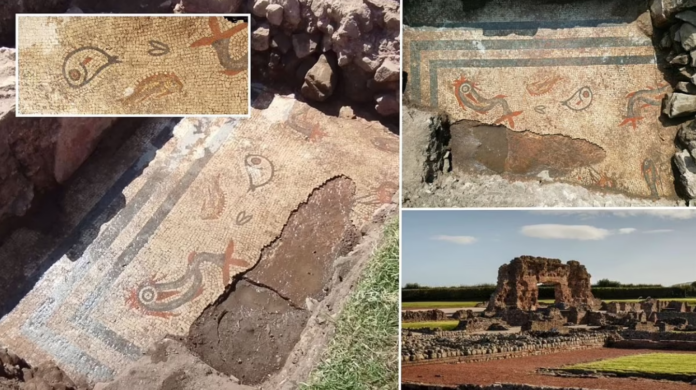In a remarkable turn of events, archaeologists in northwestern England have uncovered an astonishing piece of Roman-era artwork—a vibrant mosaic featuring dolphins and fish, buried for nearly two millennia. This discovery, made in the ancient city of Viroconium Cornoviorum, sheds new light on the Roman presence in Britain and offers insights into the city’s cultural and architectural history.
The Unexpected Discovery

Archaeologists were initially searching for an ancient temple in Viroconium Cornoviorum, located in present-day Wroxeter, when they unexpectedly stumbled upon the mosaic. This Roman city, once a significant urban center, was originally a legionary fortress that evolved into a bustling metropolis by the end of the first century C.E. At its peak, Viroconium was the fourth-largest city in Roman Britain, boasting a population of around 15,000 and covering nearly 200 acres.
A Mosaic Frozen in Time
The mosaic, believed to date back to the second century C.E., is composed of white, red, blue, and yellow tiles that depict dolphins and fish. This exquisite artwork was found in a room within a large townhouse, likely owned by a wealthy family intent on impressing their guests. The room’s mosaic, which included materials imported from outside the region, underscores the affluence and cultural aspirations of Viroconium’s elite.
The Excavation Process

The excavation was a collaborative effort involving English Heritage, the University of Birmingham, Vianova Archaeology and Heritage Services, and Albion Archaeology. Despite initial doubts about finding anything of interest, the team was thrilled when two students uncovered a small section of the mosaic. Over the next few days, the full extent of the artwork was revealed, and the intricate details, including the tail of a dolphin, were exposed.
Preserving the Past
The mosaic’s preservation is attributed to a remodeling project in the third or fourth century C.E., which filled the room with debris to raise the floor level. This protective layer of debris allowed the mosaic to remain hidden and intact for nearly 2,000 years. According to English Heritage, the excavation site has since been reburied to protect the mosaic from environmental damage.
Other Significant Finds

While the search for a temple was unsuccessful, the excavation yielded other significant discoveries. The team uncovered a small, square-shaped structure, possibly a shrine or mausoleum for a high-ranking individual, as well as a large public building that once dominated the city’s center. These findings, along with the mosaic, provide compelling evidence of Viroconium’s wealth and the confidence of its founders.
Conclusion
The discovery of the 2,000-year-old dolphin mosaic in Viroconium Cornoviorum is a testament to the rich cultural heritage of Roman Britain. This stunning artwork, preserved by the passage of time and the foresight of ancient remodelers, offers a glimpse into the lives of the city’s elite and the artistic achievements of the Roman era. As archaeologists continue to explore the remnants of this ancient city, who knows what other treasures may yet be uncovered?
